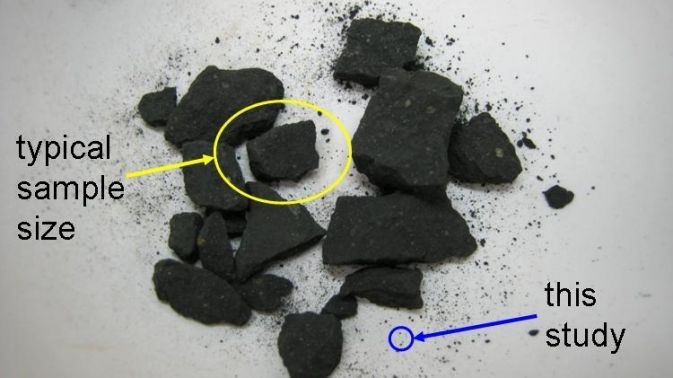Scientists Use New Technique To Study Space Dust For Ingredients That Could Have Started Life On Earth

Earth constantly receives extraterrestrial material, mostly in the form of dust from comets and asteroids, containing very small amounts of molecules that can be used as building blocks to make certain types of larger molecules that are critical for the creation of life, according to a new study.
Researchers have analyzed carbon-rich meteorites and found amino acids -- which help create proteins and are one of the most crucial aspects of life on Earth -- that are used to make components like hair and skin. The researchers also found components used to make DNA, and other biologically important molecules.
“Despite their small size, these interplanetary dust particles may have provided higher quantities and a steadier supply of extraterrestrial organic material to early Earth,” Michael Callahan of NASA and the study’s lead author, said in a statement. “Unfortunately, there have been limited studies examining their organic composition, especially with regards to biologically relevant molecules that may have been important for the origin of life, due to the miniscule size of these samples.”
According to the scientists, these carbon-rich meteorites are relatively rare and make up for less than five percent of recovered meteorites, which in turn, are only a fraction of extraterrestrial material that comes to Earth.
However, the scientists used advanced technology to recently inspect extremely small meteorite samples for components of life and found amino acids in a 360-microgram sample of the Murchison meteorite, which was found in 1969. A microgram is one-millionth of a gram and 360 micrograms is about the weight of a few eyebrow hairs.
“Our study was for proof-of-concept,” Callahan said. “Murchison is a well-studied meteorite. We got the same results looking at a very small fragment as we did a much larger fragment from the same meteorite. These techniques will allow us to investigate other small-scale extraterrestrial materials such as micrometeorites, interplanetary dust particles, and cometary particles in future studies.”
The scientists used new techniques to sort the molecules in the meteorite sample and to give the molecules an electrical charge before delivering them to a high-resolution instrument to identify them based on their mass.
“This technology will also be extremely useful to search for amino acids and other potential chemical biosignatures in samples returned from Mars and eventually plume materials from the outer planet icy moons Enceladus and Europa," Daniel Glavin of NASA and the study’s co-author, said in the statement.
© Copyright IBTimes 2024. All rights reserved.





















